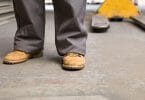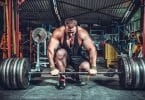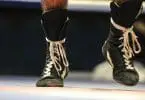We’ve updated our lineup of the best weightlifting shoes for women to meet your needs in the upcoming year. One of the most important decisions female lifters can make before performing Olympic lifting, powerlifting, or general weight training is their shoes. The old adage goes that you pay for quality on things that separate you from the ground: tires, mattresses, and shoes. Why would it not go double when you’re planning to lift your body weight?
Weightlifting shoes, sometimes known simply as lifters, are becoming more popular in the female weightlifting market in recent years. This is due to the rise of heavier weight training regimens among women, the incredible popularity of CrossFit leading to the growth of powerlifting as a sport, and the larger availability of weightlifting shoes for women.
In this article, we’ll go into the nitty-gritty of the best weightlifting shoes for women to ensure your feet are as stable and secure as your grip.
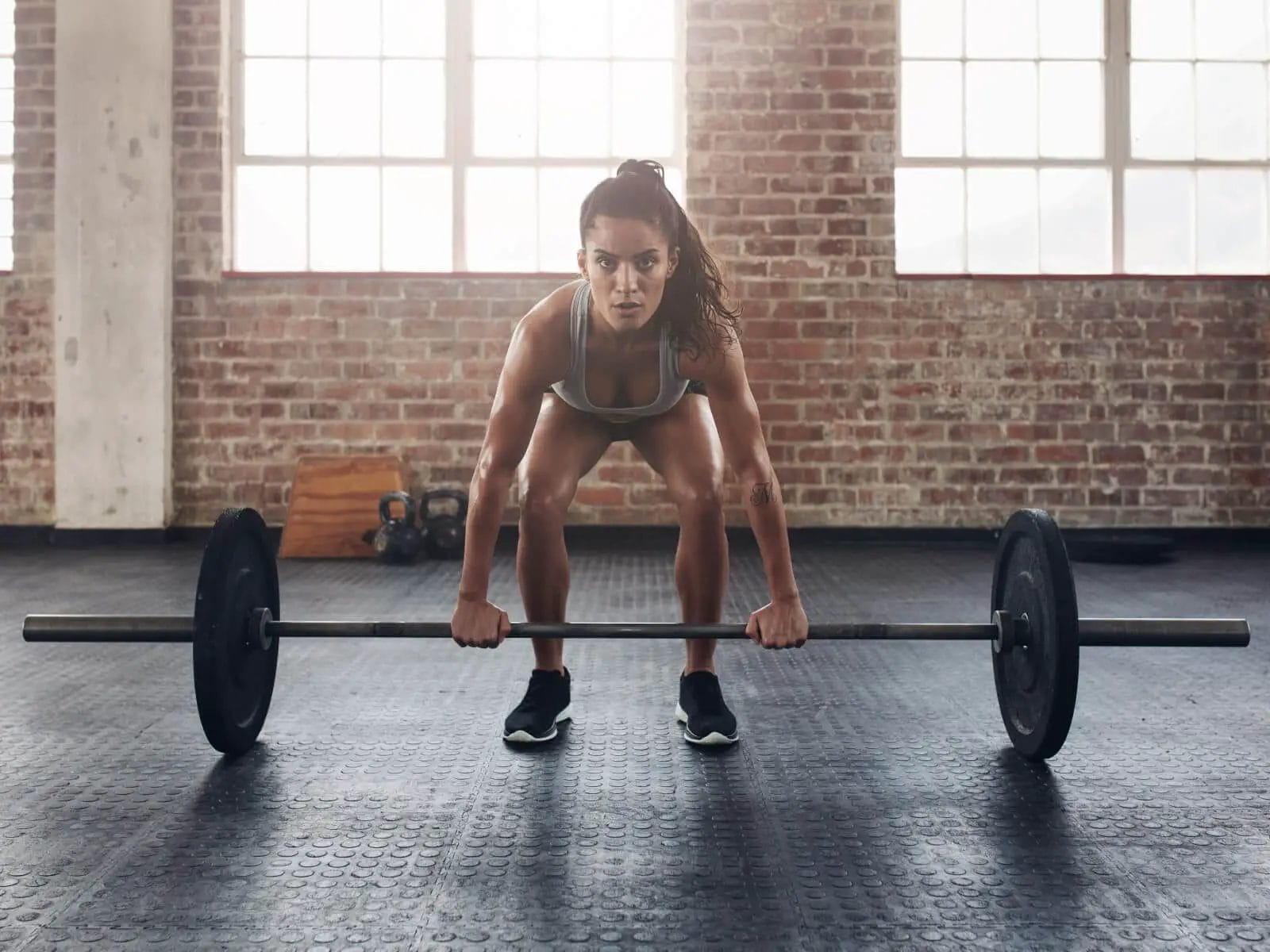
Finding the Best Weightlifting Shoes for Women
At ShoeGuide, we always want to ensure that you’re armed with the best information when looking for high-quality shoes. Our research came with a lot of time in a niche still dominated by men and men’s gear. However, with some searching and testing of our own, we arrived at some unique findings, which we share here.
To review the best lifting shoes for women, we looked to both newer and older models of shoes from everyone from smaller companies focused solely on the lifting world, to some of the largest shoe companies around today. Why did we do this? Because, for everyone from seasoned women with years of powerlifting experience to those brand new to the scene, finding the perfect pair of lifting shoes can be daunting. Our job is to take out the guesswork and make sure you’re getting the best shoes possible.
Our Selections: The Best Women’s Weightlifting Shoes for Lifting and Weight Training
Getting a solid list narrowed down was a very difficult process. There are many features that are beneficial to women looking to improve their lifting game. This made things rather difficult to settle on a list of top choices. However, we did land on what we here at Shoe Guide consider the absolute best lifting shoes for women.
Update February 2022: When we did the testing, Adidas was making both the Powerlift and Adipower Weightlifting shoes in women’s specific size/color combinations. As of now, it appears they have dropped that and moved to Unisex sizing.
Best Women’s Weightlifting Shoes of 2023
- Best Overall Women’s Weightlifting Shoe: Adidas AdiPower Weightlifting III
- Runner Up: INOV-8 Fastlift Power G 380
- Best for Beginners on a Budget: Converse Chuck Taylor All-Star
- Best for Narrow Feet: Reebok Legacy Lifter III
- Best for the Gym with Heavy Weight Training: Nike Metcon 9
Best of 2022 – Evergreen
- Minimalist Women’s Weightlifting Shoe: Vibram FiveFingers V-Train 2.0
- Best Women’s Powerlifting Shoe (lower heel-height): Adidas Powerlift 5
Why Do I Even Need Weightlifting Shoes for Training?
This is a fair question with an easy answer. Shoes made specifically for lifting weights will enhance your stability and allow your force to stay perpendicular to the ground. This reduces your chance of injury and improves the safety of your heavy lifts.
They also enhance the feedback you feel from your feet and legs, helping to improve your form. If you’re serious about Olympic lifting, women’s weightlifting shoes are one of the best areas to invest some time and money. They come with benefits for women of all shapes, sizes, skill levels, and ages.
The Best Weightlifting Shoes for Women
Best Overall— Adidas AdiPower Weightlifting III
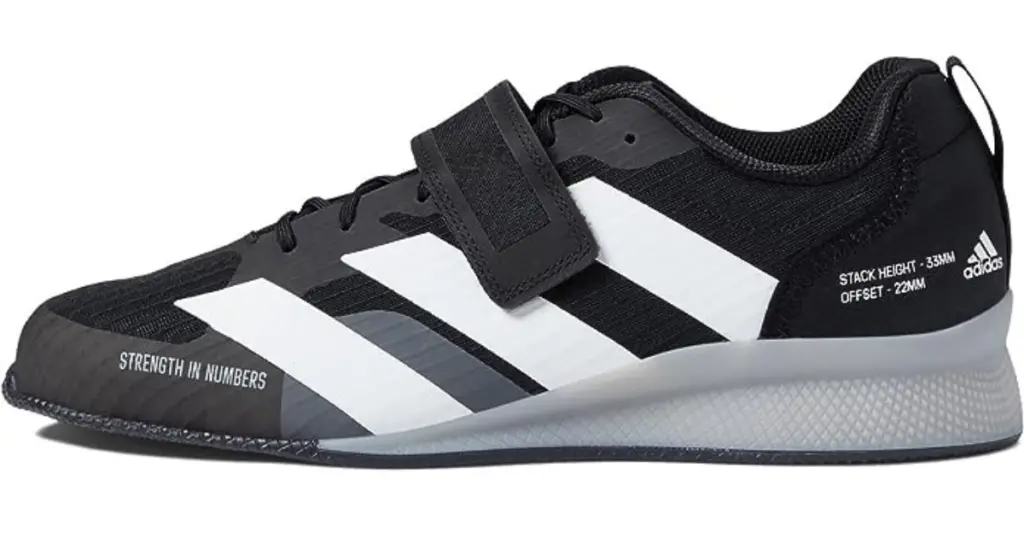
Available for Women at:
Responsible for creating some of the first weightlifting shoes in the late 70s, Adidas has refined their weightlifting shoe offerings over the years. The Adidas Adistar shoes are still legendary in some circles (though were discontinued years ago). The latest Adidas offering is the Adidas Adipower Weightlifting III. This is one of the more popular weightlifting shoes in existence.
The Adipower weightlifting series utilizes Adidas-only technology to create a weightlifting shoe focused on the lifter’s needs, deriving aspects of their most comfortable offerings outside the lifting world. The Adipower Weightlifting II is one of the few shoes on the market featuring a full textile upper.
However, they’ve incorporated advanced fabrics to ensure durability. Solving this addresses the main issue with textile uppers: they wear out and start to fray quickly. The upside of a full textile upper is breathability and flexibility. They keep your feet cool and also stretch better than other materials, allowing you to tighten the shoes down so they mold to your feet.
Even as your feet swell a bit, which is normal while lifting, the textile upper shouldn’t get too tight or uncomfortable.
The Adipower Weightlifting III also comes with extensive arch support, which is provided by a unique sole structure and thick foam interior.
Adidas Adipower Weightlifting III: Advantages
- With a breathable and soft fabric lining, this shoe provides minimal friction in the toe box and plenty of splay with lifting. This is one of the most common pain points with female lifters.
- The heels are made from injected polymer fillers. This provides some give, and they’re made to flex some when pushing in instead of putting unnecessary pressure on the feet.
Adidas Adipower Weightlifting III: Potential Disadvantages
- Although the textile upper offers advantages and Adidas uses new technology to improve longevity, it still won’t last quite as long as a full synthetic.
Runner Up—INOV-8 Fastlift Power G 380
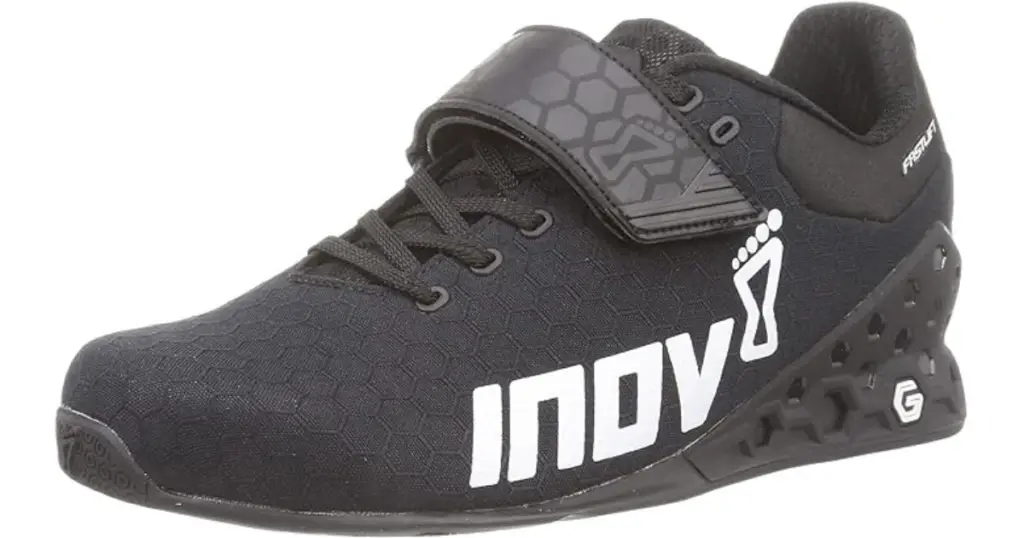
Available for Women at:
This UK-based company was another great find in our search through smaller companies for the best weightlifting shoes for women. While not as readily available on shelves as big-name brands such as, say, Nike or Reebok, INOV-8’s Fastlift Power G 380 is worth going the extra mile thanks to its innovative design, proving that the company’s name isn’t just lip service.
What we really liked about the Power G 380 is that it’s not just a copy of other shoes you might see on the market or even on this list. To start, the upper uses Ripstop, which is a lightweight, woven nylon that allows superior breathability while still being resistant to wear and tear. Another great feature is that, in addition to traditional lacing, these shoes use a wide strap closure for a nice, tight fit.
Another prominent material in the shoes’ makeup is Graphene, which has a honeycomb structure and exceptional grip capabilities. This is put to use on the Power G’s foam and Graphene outsole, keeping you firmly planted whether you’re outdoors or in the gym.
One area where the shoe may fall short is its toe box, which can be a little restrictive depending on your foot shape. Weightlifters with wide feet should definitely try these on and wear them a bit before taking them out for a spin, as the narrower toe box might be limiting. That said, the exceptional collection of great features of this shoe far outweighs the drawbacks. It’s lightweight (about 13.5oz), durable, and versatile. We recommend it not just for weightlifting but also for heavy squats and even fitness workouts requiring an elevated heel (.86 inches).
INOV-8 Fastlift Power G 380: Advantages
- The shoe provides superior grip and comfort thanks to foam and Graphene outsole.
- The material composition makes for a very lightweight shoe, around 13.5 oz, while still ensuring durability against wear and tear.
- It comes in a variety of sizes for all athletes.
INOV-8 Fastlift Power G 380: Potential Disadvantages
- The narrower fit might make this a not-great choice for athletes with wider feet, so for safety’s sake it’s important to try the shoes on and wear them for a bit to see how your toes fit before committing to a full workout.
Best for Beginners on a Budget— Converse Chuck Taylor All-Star
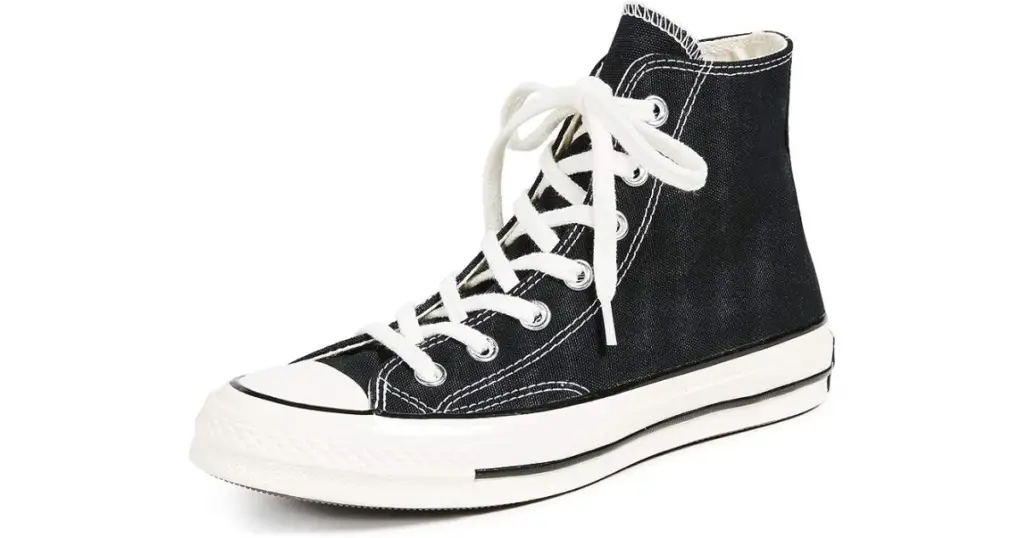
Available for Women at:
You might be surprised to see the humble Converse Chuck Taylor All-Star on our list. This shoe surprised us, too! They’re a great option for beginners and intermediate lifters due to their width and stack height. Serious lifters invested in a strength sport may find them lacking in durability long-term. However, their affordability and functionality make them an accessible shoe for beginners who want to try out lifting before investing in a more premium, high-priced shoe.
Most people have a pair of Converse lying around, meaning you can brush yours off or pick up a pair on your way to the gym.
In addition to the great ankle support supplied by the high-tops, the Chuck Taylor All-Stars provide a great foot base thanks to their wide, flat bottoms with a stable rubber outsole. Converse is known for having a low heel-to-toe drop (also known as offset), meaning there’s minimal height difference across the length of the bottom of the shoe.
A low drop is important in weightlifting because it lets you distribute your weight across your foot more evenly. For example, Converse is great for lifters who want to maximize their deadlift potential. You can progress quite far through your lifting journey with just a pair of Chuck Taylors.
These shoes are a popular choice among lifters who walk to the gym as well, making them multi-functional for daily wear as well as budget-friendly weightlifting shoes.
Converse Chuck Taylor All-Star Advantages
- Accessible option for beginners thanks to their affordability, stable rubber outsole with minimalist heel-to-toe drop.
- High-tops provide good ankle support, although low-tops can work in a pinch.
- Minimal heel-to-toe drop makes them a great option for deadlifting and lifters adopting a low-bar squat position.
Converse Chuck Taylor All-Star: Potential Disadvantages
- Not durable over a long period, may require replacing sooner than some premium shoes designed for weightlifting
Best for Narrow Feet— Reebok Legacy Lifter III
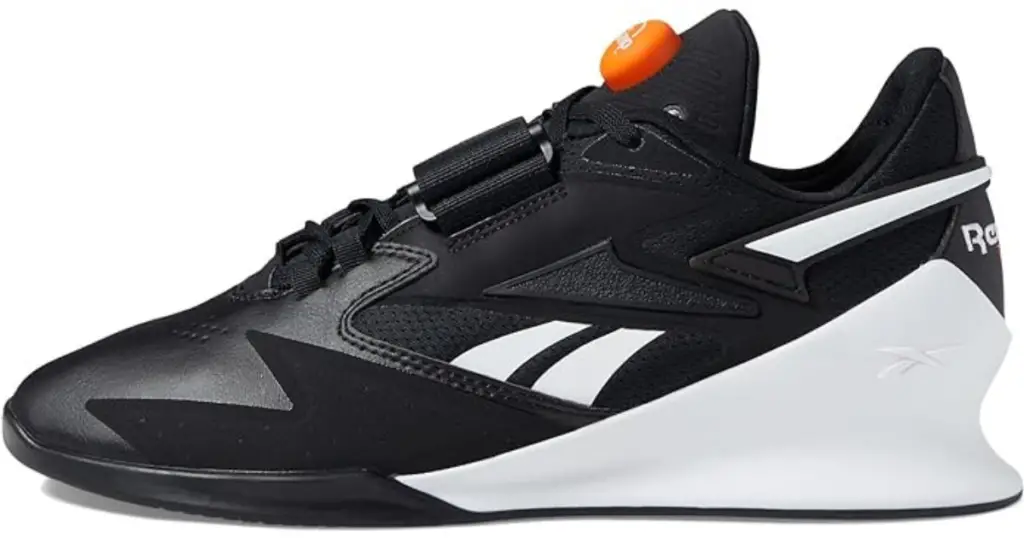
Available for Women at:
These shoes look strange, we know. However, these have long been some of the most impressive weightlifting shoes for both men and women. They received one of our top ratings in our guide to the Best Weightlifting Shoes for Men, and translate well into a female-centric lifting world.
The Reebok Legacy Lifter III comes with uniquely designed elevated heels, ideal for both Olympic lifting and powerlifting. Powerlifters, such as those competing in deadlift or squat tournaments, will often struggle to find shoes made for their specific needs. This is solved with the Legacy Lifter III, with a split focus on both Olympic-style lifts as well as powerlifting.
If your main focus is powerlifting, there is no better option than the Reebok Legacy Lifter III. Powerlifting requires durable, strong shoes, and this is what you get. What they lack in structure for other types of exercise, they shine in their focus.
Reebok Legacy Lifter III: Advantages
- The Legacy Lifter III is great with both stability and flexibility. Also, with high-abrasion rubber outsoles and reinforced toe straps, they will maintain structure and the “new look” for as long as you maintain them.
- Enhanced lateral support provides stability from sinking through heavy lifts, while also removing and alleviating back pressure, one of the most common points of concern for women in the lifting world.
Reebok Legacy Lifter III: Potential Disadvantages
- These shoes are some of the heaviest on our list. Shoes meant for more extreme lifts will be heavier by design. But, wearing these out and about, or outside the gym, is highly not recommended.
- The price point for these shoes was on the higher end of those researched and chosen for our list. This is disappointing, as they aren’t multi-functional, and are really great at only one thing: lifting.
Best for the Gym with Heavy Weight Training— Nike Metcon 9
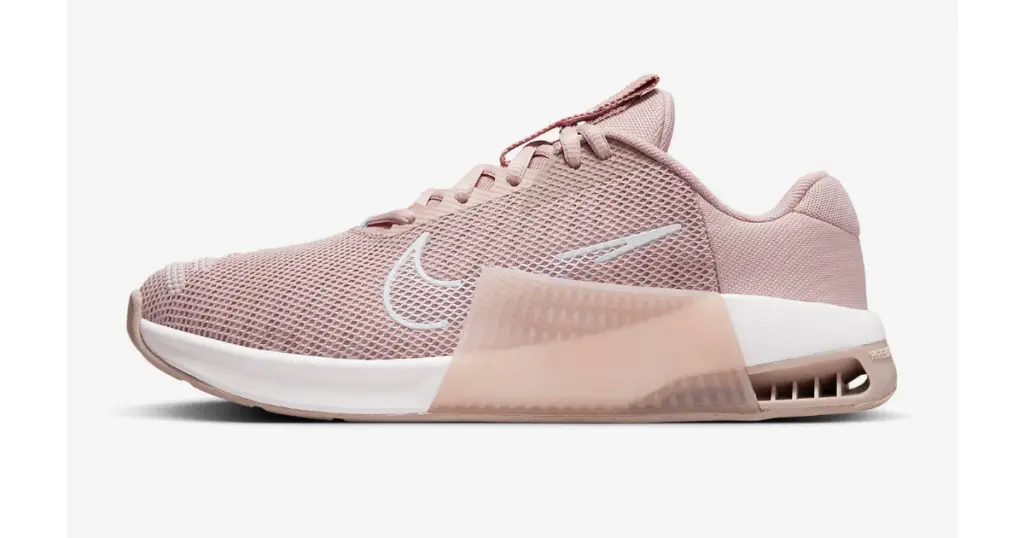
Available for Women at:
If you’ve spent any amount of time looking through the guides to any sports-centric shoe category we work with, you’ll notice that Nike shoes manage to make their way into the highlights of many of our lists for top shoes. This is because they appear consistently in ShoeGuide research and reviews. So, rest assured: this isn’t any type of bias on our part!
With a stylish upper, minimalist styling, and impressive stability and comfort, the Nike Metcon 9 surpassed expectations and works fine both in and out of the gym. A great, light shoe with a grippy sole and a new more breathable upper. Additionally, a sleek stylish design leads to this being a surprising champion in the world of female weight training.
As we noted above, this is a shoe for gym work, weight training, and CrossFit, but not an Olympic weightlifting shoe. They’re a great place to start if you want to add powerlifting, or other heavy lifts to your workout, but aren’t ready to invest in dedicated lifting shoes just yet.
They also feature Nike’s removable HyperLift inserts that allow you to increase the heel height for specific workouts. This helps them bridge the gap between a CrossFit shoe and a weightlifting shoe.
The HyperLifts works really well for an insert, and definitely add versatility to the Metcon. However, we still don’t think these are substitutes for an Olympic lifting shoe if you start to get serious about training or competing in the sport of weightlifting.
Metcon 9: Advantages
- These breathable, lightweight shoes are ideal for things like CrossFit, circuit training, and other exercise routines including heavy lifting but not exclusively.
- In comparison to many alternatives, these shoes are not strange-looking or bulky at all. They are some of the most stylish weightlifting shoes we found in our research.
Metcon 9: Potential Disadvantages
- The Metcon 9 is not going to prevail in squats compared to some of the alternatives. There is no solid heel rise, and the support in that aspect is lacking a bit.
Best of 2022 — Evergreen
Best Minimalist Women’s Weightlifting Shoes— Vibram FiveFingers V-Train 2.0
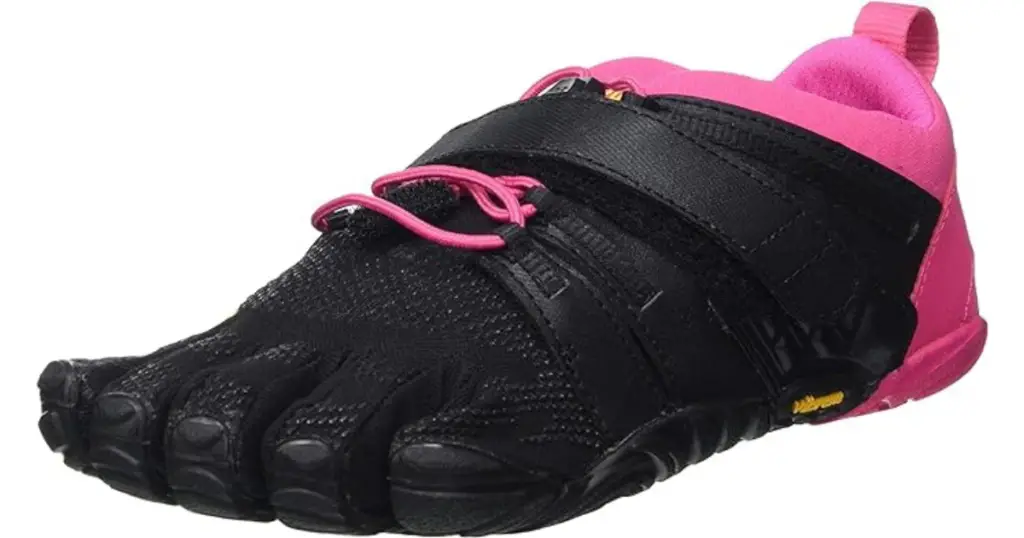
Available for Women at:
We have written extensively about the benefits of the shoes that Vibram has released in recent years. The best weightlifting shoes for women are no exception to this. The V-Train 2.0, a stalwart contender in our Best CrossFit shoes guide as well, excels in powerlifting and weightlifting as well.
If you’re looking for a minimalist option for weight training, CrossFit, or powerlifting, then we think this is a good option. These are minimalist shoes with a solid, flat sole, and no raised heel. This makes them poorly suited for Olympic lifts, but ideal for deadlifts and some of the other powerlifting in your routine. However, they really shine as a versatile option that works for powerlifting as well as cross-training.
As you can tell from the picture, these will not provide cushioning or arch support. Nor should they. Vibram makes these shoes with a minimalist design, letting your foot’s natural shape govern your motion. If that’s what you’re looking for then this is great.
The V-Train 2.0 might be minimalist, but it still features a number of innovations that we should point out. The most obvious feature that sets these apart from other Vibram offerings is the hook-and-loop strap lock on the laces. The strapping features reinforcement along its length and allows you to get a tighter fit than the lacing system alone. This is ideal for your powerlifting as well as jumps and rope climbing.
Vibram FiveFingers V-Train 2.0: Advantages
- Aggressive outsole design featuring multiple lugs. There are rounded lugs around the ball of the foot and heel to increase stability during lifting. However, there are also lateral lugs through the midfoot to improve traction and grip during HIIT-type motions.
- Rubber compound in outsole. These rubberized outsole are extremely durable. This is good for gym work, but even better if you plan to do some outdoor cardio in them. They’ll resist damage from concrete, asphalt, or trails if you are using these as a minimalist runner.
- Somewhat heavier and more substantial than other Vibram designs. This is an advantage if you’re using this for lifting since it improves the stability of your feet.
Vibram FiveFingers V-Train 2.0: Potential Disadvantages
- Not Olympic weightlifting shoes, and will not help with your snatches or cleans. Of course, if you’re looking at minimalist lifting shoes, then you already know this.
Best Women’s Powerlifting Shoe with Low Heel— Adidas Powerlift 5
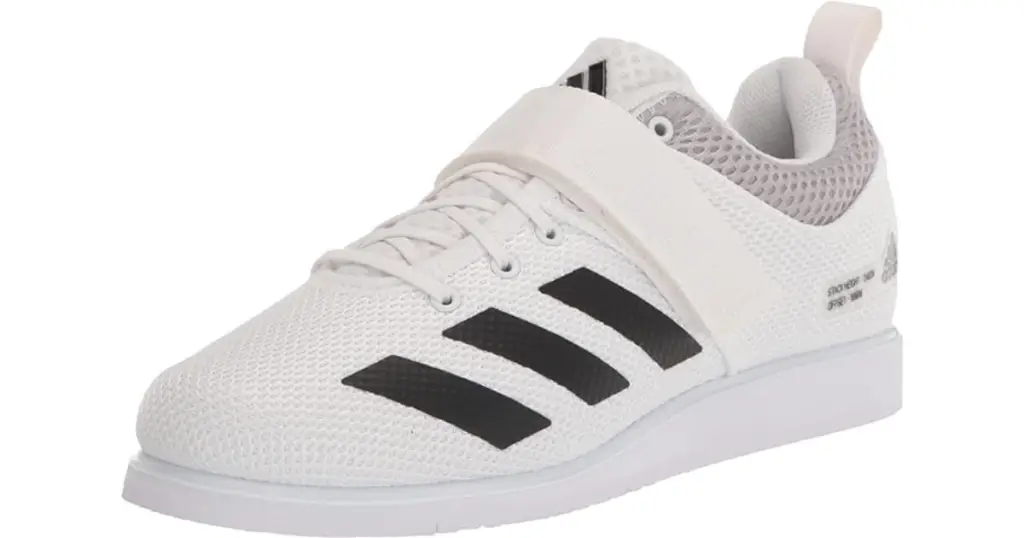
Available for Women at:
Adidas is by far one of the most globally known athletic shoe brands. This being the case, they have cemented themselves as a true figurehead in sports footwear. The world of women’s weightlifting and powerlifting is no exception.
We feature two Adidas brand weightlifting shoes on our list of the best weightlifting shoes for women. This one, though, the Adidas Powerlift, has a few notable differences in comparison. For one, these lifting shoes can be used for various cross-training activities. Whether you are doing wind sprints or squats, clean and jerks, or box jumps, just about anything is possible with the Powerlift.
We don’t put them quite in the CrossFit category since they do have a 0.6″ raised heel and a very stiff sole, but they’re close. This is a perfect shoe for powerlifting and heavy-weight training. They’ll handle the occasional cardio WOD, but you should use these primarily for lifting.
The Powerlift features a synthetic textile upper that is similar to the Adipower Weightlifting II. Additionally, these synthetic uppers provide breathability, giving these shoes the ability to really open up once you step outside the gym. This breathability in the synthetic upper, however, comes at the expense of both longevity and durability compared to alternatives.
Finally, unlike many comparable weightlifting shoes that are on our list of the best lifting shoes for women, the heel wedge of the Powerlift is quite low. This improves the capacity for standard ranges of motion when traversing through other exercises outside the lifting realm. With a variety of styles and color options, these are the true “do-it-all” lifting shoes, at a fraction of the price of alternatives.
Adidas Powerlift: Advantages
- These hit the marks as some of the lightest lifting shoes on the market, with the lightest price associated with them as well.
- With fully synthetic uppers and a thinner, less elevated heel, these are ideal for daily exercise in addition to powerlifting and weightlifting.
Adidas Powerlift: Potential Disadvantages
- While the synthetic upper is ideal for both breathability and flexibility, it suffers in longevity and durability. These aren’t going to last anywhere near as long as leather-upper alternatives.
- With a low price, you truly get what you pay for. However, for what you get with the Powerlift, you may still be overpaying.
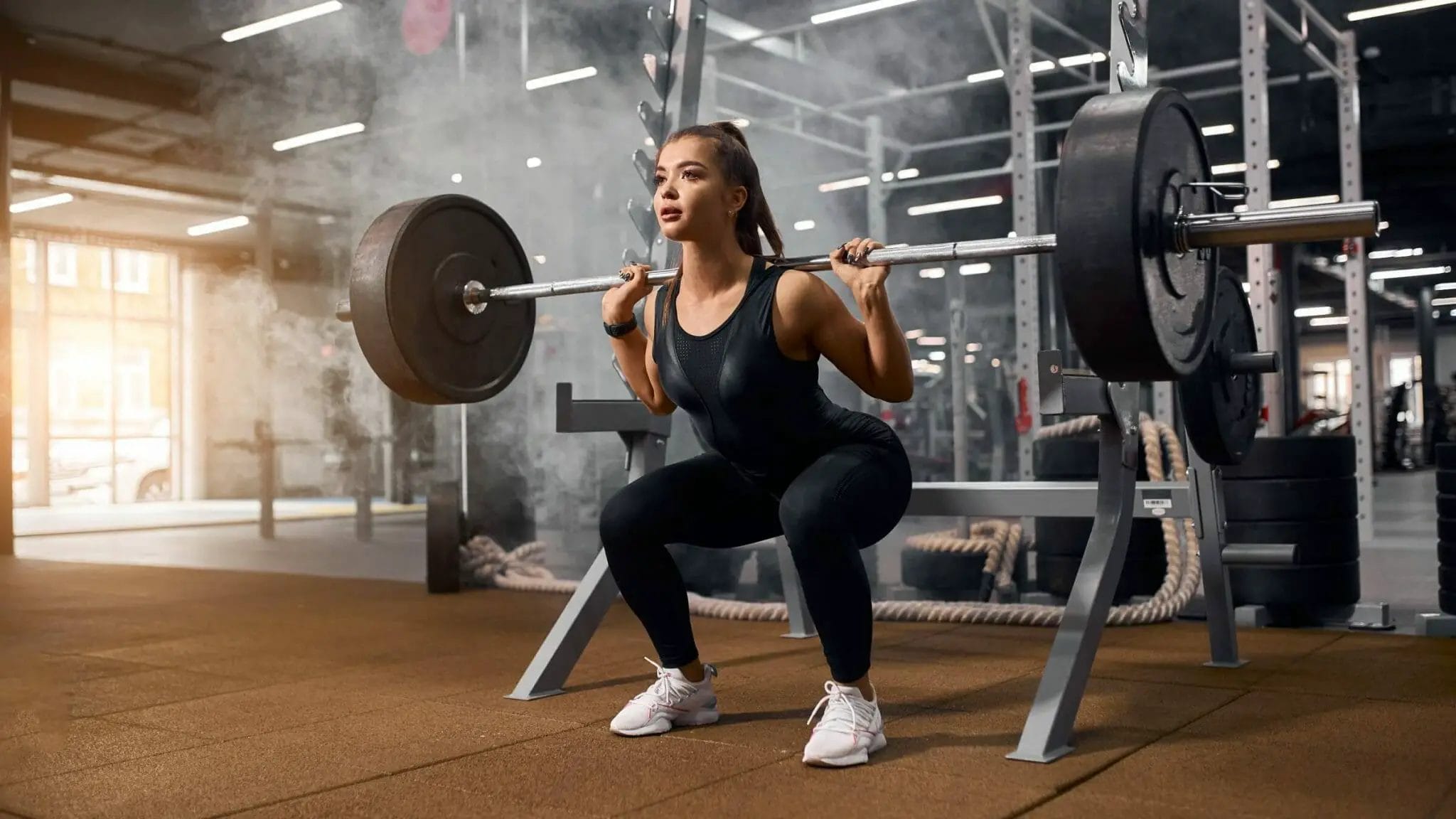
The History of Weightlifting Shoes
The growth of lifting shoes for women has been astronomical in recent decades. However, this hasn’t always been the case. Until the last decade, no manufacturers made dedicated women’s weightlifting shoes. Demand and use of these lifting shoes have correlated directly with the popularity of powerlifting and weightlifting for women.
Overall, right before the Great Depression in the United States, the International Weightlifting Federation, or IWF, created a more rule-oriented competition to test the bench press, snatch, and clean and jerk power of lifting professionals. In the time that followed, many athletes, both male and female, competed with many different styles of shoes, ranging from standard sneakers to boots to boxing shoes and beyond.
However, with the growth and development of weightlifting, styles of lifting started to modify as well. From here, it was discovered that an elevated heel had an incredible advantage for competitive weightlifters.
Why Elevated Heels Matter in Weightlifting Shoes for Women
Elevated heels were an absolute game changer for weightlifters of all shapes and sizes. They provided a wonderful new method for lifters to come out from underneath the weight. These shoe lifts alleviated the issues common with stability struggles and the increased shin angle, prone to injury, discomfort, and general pain. This is as true for women’s weightlifting shoes as for men’s.
The Soviet Union gets credit for starting this trend, noticing significant improvements with their male weightlifters regarding ankle mobility. Soon after, many popular manufacturers of shoes started to create their own versions of weightlifting shoes with elevated heels, improving upon the original design and translating it into modern options for both men and women.
Seeking Continuous Improvements
Throughout the ’60s and ’70s, Adidas planted their flag as the market leader for weightlifting shoes, pushing the idea of modern weightlifting in the United States among men, and eventually women. They were the first company to release women’s weightlifting shoes as a separate line from their men’s shoes.
Later on, developers of lifting shoes decided to remove the high-top section from their shoes, and instead to push the strap on the forefoot further down. This change was determined to provide extensively more ankle mobility in comparison to high-top models of the past. Ankle mobility is one of the most common pain points for women who compete in heavy weightlifting competitions. From this point, shoe manufacturers continue to make minor tweaks in style and technology, from BOA lacing to less elevated heels, synthetic uppers, and more.
Performing Weightlifting Shoe Due Diligence
Weightlifting shoes, especially those women’s weightlifting shoes, are some of the most technologically advanced and complicated types of shoes on the market today. This being the case, there are quite a few nuances that should be addressed before pulling the trigger on a purchase.
Some of the most important factors that should play into due diligence and your own research are: Heel height differences, Straps and securing mechanisms, Heel composition, and lacing systems. We are going to dig into each of these, but first, let’s take a look at what comprises a standard weightlifting shoe.
Standard Weightlifting Shoe Composition
The typical weightlifting shoe contains a higher upper boot, tightening system or straps, wide toe boxes, and elevated and stiff heels. From the bottom up:
- Stiff heels. Standard weightlifting shoe heels are built from TPU. However, some of the more old-school options utilize EVA, stacked leather, or wood.
- Elevated heels. These heel elevations can vary based on the model, make, and manufacturer, but the standard is three-quarters of an inch.
- Wide toe boxes. Not all weightlifting shoes for women provide wider toe boxes, but most do. This wider toe box assists with stability and toe splay.
- Tightening systems or straps. Many shoes will have at least one type of tightening system or strap, whether it be a standard velcro strap, a BOA tightening system, or anything in between.
- Higher upper boot. Many weightlifting shoes have higher boots, providing additional ankle security.
Heel Height Differences
One of the most crucial things that all female weightlifters should consider when weighing their options is why lifting shoes are their own category from the get-go: elevated heels. The height of a heel is an important factor for many lifters, as it provides assistance for comfort when completing lifts.
The standard heel height for weightlifting shoes is three-quarters of an inch. However, there are some models (for example the Leistung outlined above) that have a one-inch heel height. There are others, such as the PowerLift 5, with a far more conservative heel elevation.
A woman’s height also plays a role in how much of a heel elevation should be considered. For those on the taller end, higher heels are likely a more effective option. This comes from taller women typically having longer legs.
Straps and Securing Mechanisms
Another common characteristic found in weightlifting shoes for women to put into consideration is the securing mechanism of the shoe. Many lifting shoes have a single strap and laces. However, there are some with multiple straps (like Reebok’s Legacy Lifter reviewed above). There are others that have a BOA adjustment only, and even more that have a combination of straps and BOA adjustments. There are also some, like the New Balance Prevail, that don’t have any straps or securing mechanisms, but still make for a wonderful weightlifting shoe. The preference is completely up to the buyer.
The most common strap location is across the upper portion of the tongue. This provides added durability and stability for the increased ankle mobility required with such exercises as heavy squats, one of the most common heavy lifts performed.
Heel Composition
Many shoes made for weightlifting have that elevated heel, which comes from a variety of materials. The material you select is a personal preference. Many common heel bases are plastic, a TPU material that is typically high quality. Plastic heels provide harder surfaces to stand on. They also usually last longer than wood or leather heels.
In comparison, heels made of wood focus on weightlifters wanting a more old-school, traditional shoe style. Wooden heels provide lifters with a stronger “floor-like feeling.”
Much like their wooden counterparts, heels made from stacked leather provide a more traditional look and feel. One example of this is the NOBULL lifting shoe; this brand has some of the few remaining lifting shoes that use stacked leather instead of TPU or wood.
Lacing Systems
In most cases, shoes for weightlifting will arrive with standard shoe lacing that you would find with just about any other sports-related shoe. In fact, the laces in weightlifting shoes are typically identical to their tennis shoe or running shoe brethren. However, you can always change these for more effective and focused lacing.
But, there is a difference in tightening systems with a few of the shoes we reviewed above. For example, the BOA lacing system involves a dial that is tightened like a knob, providing tightening and snugness. This BOA system works to replace both standard lacing structures, as well as velcro straps.
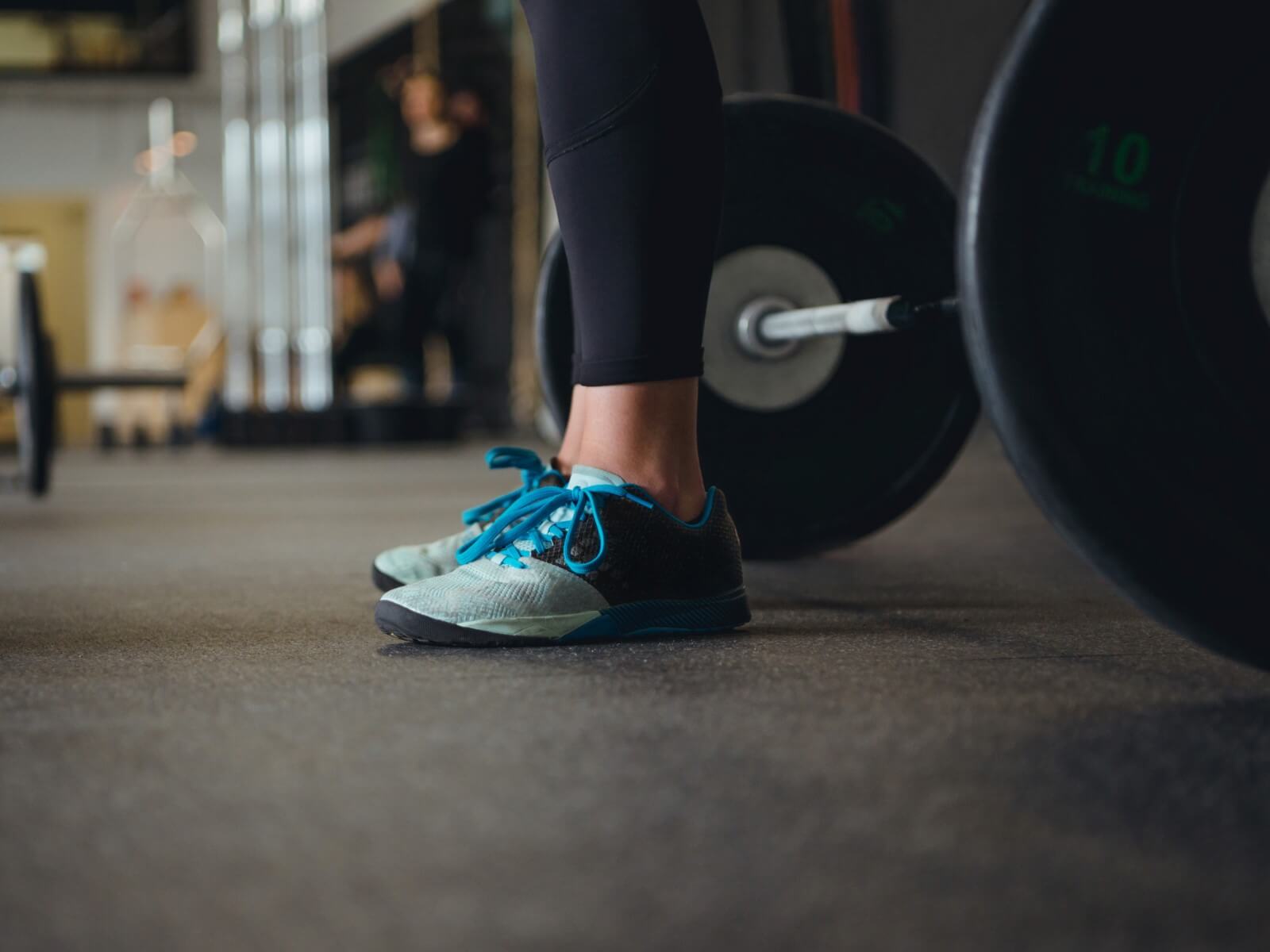
Wrapping It Up
You have the basics of women’s weightlifting shoes. The right pair of shoes can make or break your success in weightlifting. Whatever shoes you choose, make sure that they provide a stable and secure base for your lifting.
We hope you found the guide helpful, and please feel free to leave a comment if you have any questions!


